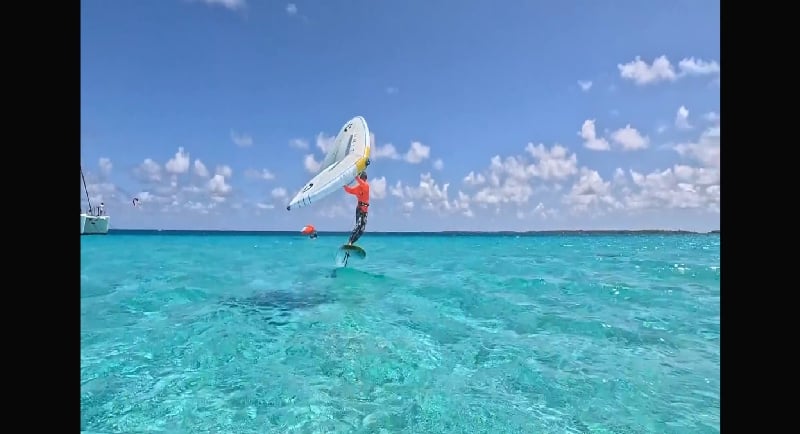How to Learn Wing Foiling: A Beginner’s Guide
This wing foiling for beginner’s guide will walk you through everything you need to know to get started and how to learn wing foiling.
BEGINNERS GUIDE'S
7/8/20252 min read


Wing foiling is one of the fastest-growing water sports in the world, combining elements of windsurfing, kitesurfing, and foiling into a uniquely accessible and exciting experience.
Whether you’re drawn to the freedom of gliding over water, or simply want to try something new, this beginner’s guide will walk you through everything you need to know to get started.
What is Wing Foiling?
Wing foiling (also called wing surfing) involves standing on a wing board with a hydorfoil while holding an inflatable wing that captures the wind. The foil beneath the board lifts you out of the water, reducing drag and creating a smooth, flying sensation.
It’s quieter and more compact than windsurfing or kitesurfing, and you don’t need a harness or lines. It’s the ideal gateway for newcomers to wind-powered water sports.
Essential Gear
1. The Wing:
Inflatable and handheld
Sizes vary based on wind conditions and rider weight (typically 4m–6m for beginners)
2. Wing Foil Boards:
Look for a larger, stable board (around 140–160 liters) to help with balance
Some beginners start with inflatable boards for safety
3. The Foil (Hydrofoil):
Choose a large front wing for stability and lift
Shorter mast (60–75cm) is easier to learn on
4. Safety Gear:
Helmet, impact vest, and a board leash are highly recommended
Read our full Gear Guide for more detailed recommendations based on your skill level and local wind conditions.
Step-by-Step: How to Learn Wing Foiling
Step 1: Land Drills Start by practicing on land or in shallow water:
Learn how to hold the wing
Practice steering and power control
Get used to wing positioning with and without wind
Step 2: On-Water with a Non-Foiling Board
Use a large SUP or beginner foil board without the foil installed - ideally a dagger board. Dagger boards allow you to go up wind.
Focus on upwind/downwind control
Practice standing up, tacking, and wing control
Step 3: Foiling Time
Add the foil to your board once you’re confident controlling the wing
Learn to shift your weight to lift off
Expect falls and short rides—progress is fast with practice
Step 4: Progression
Learn transitions, jibes, and even small jumps as you gain control
Watch video tutorials or book lessons to accelerate your progress
Why Take Lessons?
Learning on your own can be frustrating. A certified instructor shortens the learning curve dramatically and ensures you understand wind direction, safety rules, and proper gear setup.
Find a beginner-friendly wing foil school near you
Safety Tips for Beginners
Always check the wind forecast before heading out
Stay clear of swimmers, rocks, and boat channels
Start in light to moderate wind (10–15 knots)
Use a helmet and buoyancy aid
FAQs for New Wing Foilers
What gear do I need to start wing foiling? See Gear Guide
Is wing foiling hard to learn? With proper instruction, most beginners foil within 5–10 sessions.
Can I teach myself? Yes, but lessons will save you time and reduce risk.
Connect
Explore wing foiling schools, vendors, and events.
Support
Learn
801-554-1050
© 2025. All rights reserved.
